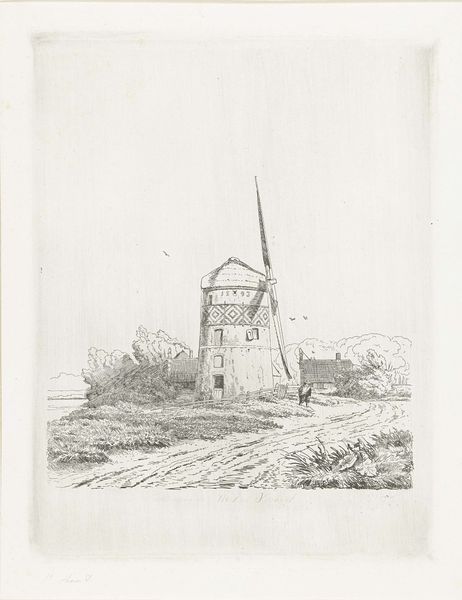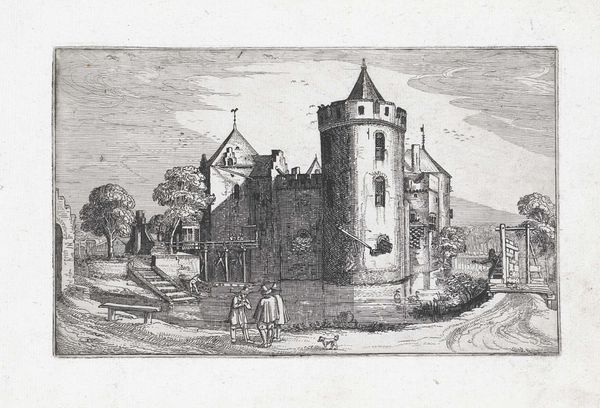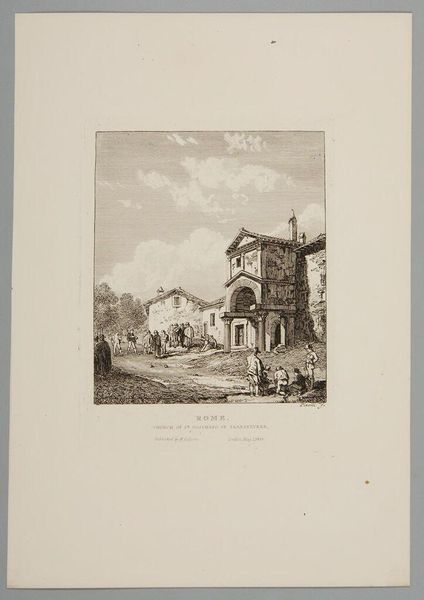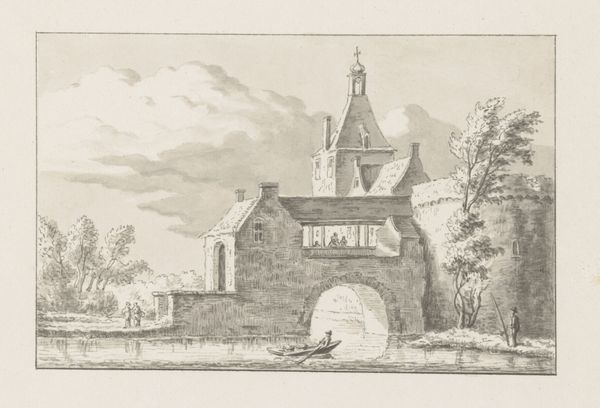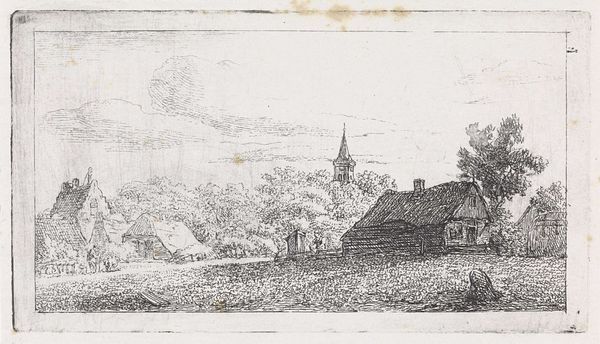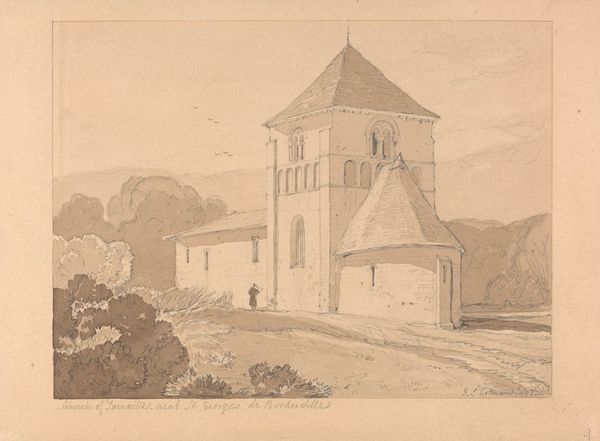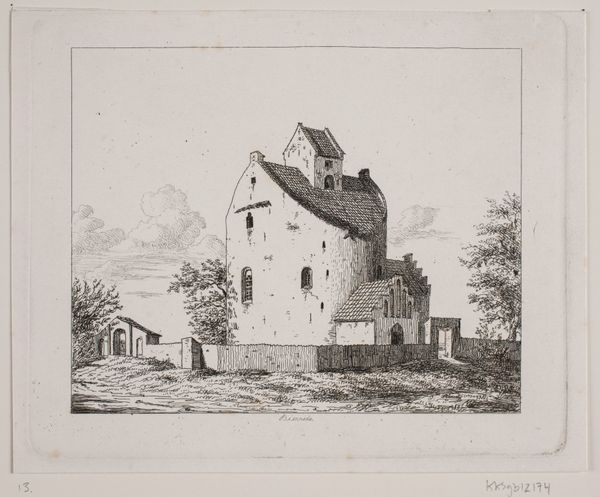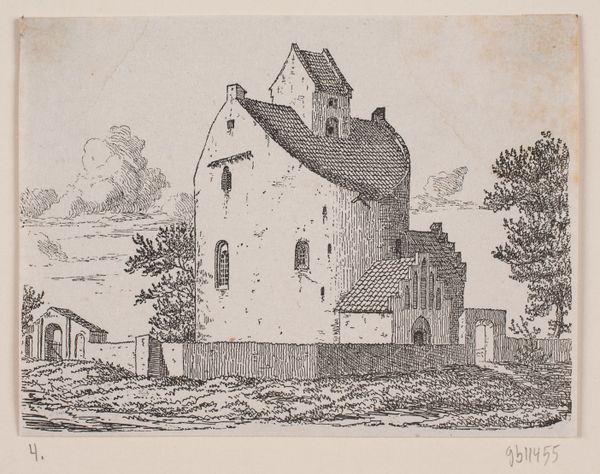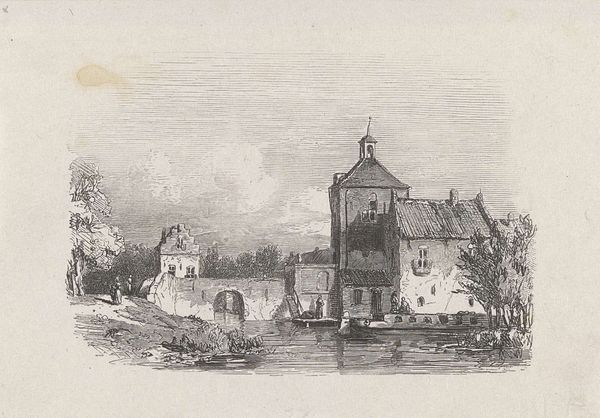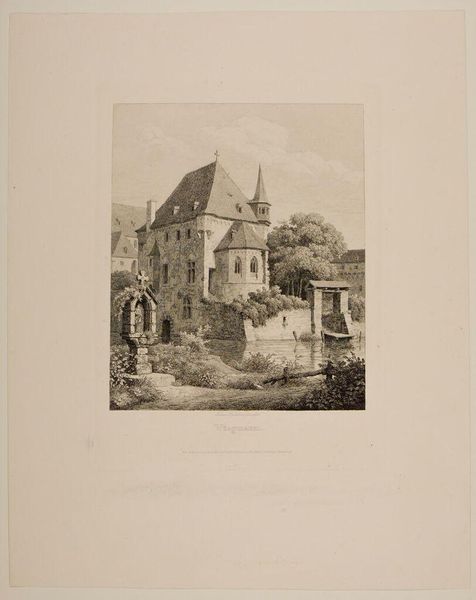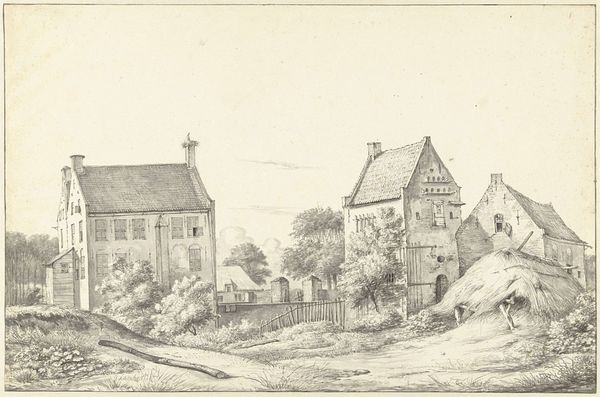
drawing, print, pencil
#
pencil drawn
#
drawing
# print
#
pencil sketch
#
landscape
#
romanticism
#
pen-ink sketch
#
pencil
#
pencil work
Dimensions: height 260 mm, width 200 mm
Copyright: Rijks Museum: Open Domain
Pierre Louis Dubourcq made this print, Rembrandts molen te Koukerk, sometime in the mid-19th century using etching. This intaglio process involves biting lines into a metal plate with acid, then inking the plate so that the ink sits within the etched lines. The resulting print, with its soft, slightly blurred quality, bears the trace of this chemical and mechanical process. You can almost feel the artist’s hand as he carefully applied the acid-resistant ground, drew into it with a needle, and then submerged the plate. The image itself reflects the social context of the time. Windmills like this one were crucial pieces of infrastructure, grinding grain and powering local economies. They represent a link between human labor, agricultural production, and the natural world. Dubourcq’s choice of etching, a relatively democratic printmaking medium, further emphasizes this connection to everyday life. So, when we look at this print, we’re not just seeing a picturesque scene, but also a glimpse into the workings of 19th-century society.
Comments
No comments
Be the first to comment and join the conversation on the ultimate creative platform.
